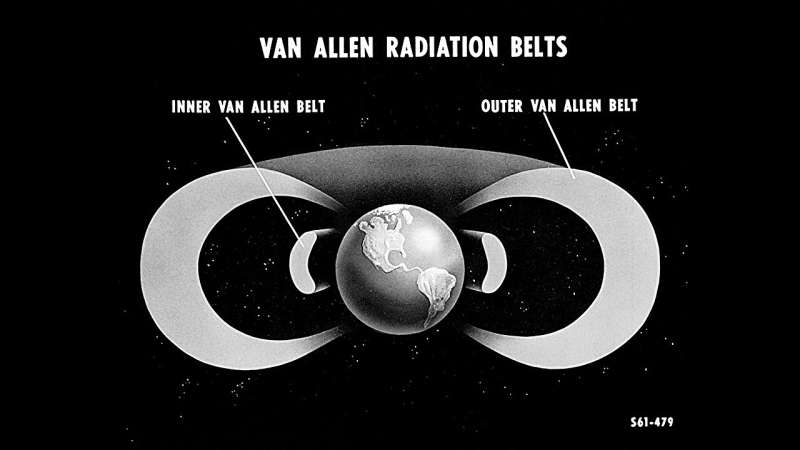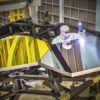Encircling Earth are the Van Allen radiation belts—vast, doughnut-shaped rings of highly energetic charged particles, mostly originating from the sun, that are trapped by our planet’s magnetic field, or magnetosphere. The belts prevent dangerous radiation from reaching Earth’s atmosphere, but can also pose hazards to nearby spacecraft.
When the sun unleashes a burst of solar wind toward Earth, it can cause particles in the Van Allen belts to accelerate, increasing radiation to even more dangerous levels.
Now, research by Santolík and team suggests that an especially intense superstorm, such as the Carrington event of 1859, could boost Van Allen belt radiation to more extreme levels than previously expected. This is thanks to a specific type of electromagnetic wave known as a chorus wave.
Chorus waves are a kind of “whistler” wave, named for the sound emitted by a radio receiver when they are detected. These naturally occurring waves ripple through the “ocean” of charged particles, or plasma, that surrounds Earth, including the Van Allen belts.
During geomagnetic storms, chorus waves occurring close to Earth’s geomagnetic equator typically accelerate the particles trapped in the Van Allen belts, boosting radiation levels. But when these waves propagate to higher latitudes, they more often may knock trapped particles free, scattering them into the atmosphere and reducing radiation.

New research suggests that electromagnetic chorus waves could raise radiation levels in Earth’s Van Allen belts more dramatically than previously expected. © NASA’s Goddard Space Flight Center/Historic image of Van Allen belts courtesy of NASA’s Langley Research Center
Until now, few studies have addressed the net effects of these processes during particularly intense space storms. To get a clearer picture, the researchers compiled wave data from NASA’s Van Allen Probes around the equator and the European Space Agency’s Cluster spacecraft at high latitudes. They used the data to run 2D simulations of Van Allen belt particles buffeted by chorus waves during extreme storms.
The paper is published in the journal AGU Advances.
The simulations suggest that an extreme storm would intensify low-latitude chorus waves, dramatically accelerating Van Allen particles and boosting radiation levels. However, contrary to expectations, high-latitude chorus waves would not similarly intensify, so any particle scattering would not be nearly enough to make up for the boost in particle acceleration.
Overall, chorus waves would increase radiation to levels far beyond any previously measured during the space age, creating an especially harsh environment for infrastructure.
The authors write that these findings could aid preparation for future extreme events. They also could deepen understanding of Jupiter’s and Saturn’s radiation belts, which experience electromagnetic waves similar to chorus waves near Earth.
More information:
Ondřej Santolík et al, Strong Effects of Chorus Waves on Radiation Belts Expected for Future Magnetic Superstorms, AGU Advances (2024). DOI: 10.1029/2024AV001234
Provided by
American Geophysical Union
This story is republished courtesy of Eos, hosted by the American Geophysical Union. Read the original story here.
Citation:
Audible storm waves could turbocharge Earth’s radiation belts (2024, October 16)



